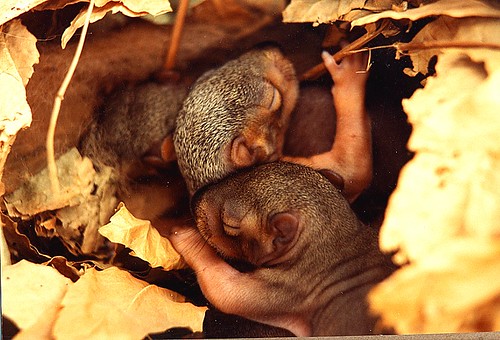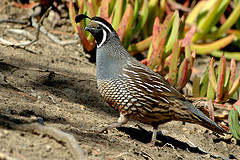| Cats and Wildlife! |
 |
 |
 |
| Written by Melanie |
|
Young birds, lizards, possums and other newborn wildlife are easy prey for cats As young birds, lizards, bandicoots and possums venture from their nests and caves in early summer in their usual vulnerable and generally defenseless state, The Sydney Metro Wildlife Service remind cat owners that even the most well-fed domestic cats pose serious threats to these small and newly born wildlife. At the same time, free-roaming pets also face dangers that can injure or kill them. “Cats and other predators probably kill more wildlife this time of the year than any other because newborn prey not only don’t have any physical defenses but they also have not fully developed the danger awareness regarding predators that comes with time,” said Bird Conservancy Vice President Mike Parr. “This is the most important time of the year for cat owner’s to restrict outdoor activities of their pet,” he said. “It’s also a common misconception that domestic cats can live easily outdoors,” says Michael Hutchins, Ph.D., Executive Director of TWS. “Well-meaning owners often think it’s okay to let them roam because cats seem independent by nature. And while they don’t always need the same care as dogs, the truth is dramatically different.” Free-roaming or feral cats are at risk of early death or serious injury due to diseases, cars, poisons and predators such as dogs and coyotes. Outdoor cats typically live less than five years, whereas cats kept exclusively indoors can live to be 17 years or older. Cats kill baby animals (Brian Murphy/Walnut Creek) Wildlife Service biologists have long agreed with colleagues at state and federal wildlife agencies that domestic cats allowed to roam outdoors have serious, negative impacts on wildlife populations. Even cats that live outdoors part-time pose threats. “Outdoor life is often hard on cats; it’s also tough on native wildlife,” said Mike Parr, Vice President of ABC. Exact numbers are unknown, but scientists estimate that nationwide, cats kill millions of birds and small animals each year including mammals (possums, small native rodents) and marsupials, reptiles (lizards, skinks) and amphibians (frogs). Birds whose natural movements include time on or near the ground are susceptible, especially those that breed or nest on the ground. Typical prey for cats includes robins, finches, quail etc. In addition, young wildlife are often most vulnerable as they do not have the experience to avoid cats or the ability to quickly escape harm. “The top cause of declining bird populations is that their natural habitat is being lost to development, Hutchins notes. “Domestic free roaming and feral cats are close behind. It’s hard for many cat owners to believe their pets are predators, since we are not usually around to see them in action.” People often believe that cats won’t hunt if they’ve been well fed. Research shows that cats instinctively hunt, no matter how much they’ve been fed, because the hunting instinct is independent of the urge to eat. Quail often killed by cats (Joe Oliver/Walnut Creek) “People can do something to help native wildlife in their backyards, and it will likely help their pets live longer,” concluded Parr. “We advise cat owners to spay and neuter their pets, and protect them by keeping them indoors, on leashes, or in outdoor enclosures.” Affordable products and helpful information make it easy to keep pets contented indoors with a minimum of hassle. Information and resources can be found on the ABC website at http://www.abcbirds.org/abcprograms/policy/cats/index.html About Sydney Metro Wildlife Service: Sydney Metro Wildlife Service
OCTOBER 2010. This afternoon my husband, Nathan, picked up a young female ringtail possum that was sitting in the middle of the road in broad day light - Always a sign that there is something seriously wrong as possums are nocturnal. At first glance the possum seemed to have a closed left eye that was weeping a puss like substance. Nathan and I both have carry boxes in our cars for such situations so he bundled the possum into the carry box and returned home. I took one look and knew there was more to the situation. There were patches of furr missing and puncture wounds typical of that caused by a cat. I bathed the eye enabling me to see that it had sustained recent trauma. The eye was swollen and red. I took the possum to the local vet who kindly dosed the possum up with antibiotic and supplied an eye cream that has to be administered 3 -4 times a day. I am hopeful that this little possum will beat the odds and survive. So often our gorgeous wildlife come off second best. Please understand the importance of keeping your cat INDOORS!!!
|
| Last Updated on Saturday, 02 October 2010 04:55 |



